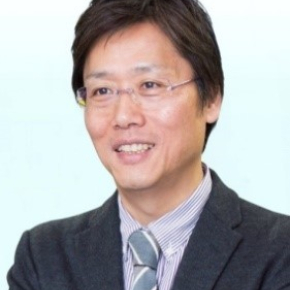The CNRS Institute of Chemistry welcomes Chihaya Adachi as the Ambassador in Chemical Sciences
This September, Chihaya Adachi* will give his lecture tour around different research laboratories in France as a CNRS ambassador of the Chemical Sciences. As distinguished professor and director of Kyushu University's Center for Organic Photonics and Electronics Research (OPERA), Chihaya Adachi is widely recognized for his outstanding and pioneering research on semiconductors used in organic light-emitting diodes (OLEDs) and organic solid-state laser diodes (OSLDs).
His tour will start in Lyon on the 22th of September, visiting the cities of Grenoble, Strasbourg, Paris, and will come to an end in Bordeaux on the 30th (More details on his lecture tour are at the end of this interview). In addition to his lectures, this tour is an excellent opportunity for the French scientific community of organic electronics to interact with Prof. Adachi, and encourage international collaborations.
What drove you to go into the field of organic electronics?
I first became interested in organic electronics when I was an undergraduate student in 1985. I learned that electronic circuits could be constructed using organic molecules in a lecture given by Dr. Hiroyuki Sasabe of RIKEN. Using organic molecules, it is possible to construct electronic circuits with the molecular-level resolution, thus exceeding the limits of conventional semiconductor microfabrication based on Si. This was the main reason why I wanted to start research on organic electronics. I then started my research by controlling the conductivity of polyacetylene thin films, and have been engaged in OLED research since graduate school for about 30 years. Although I have not yet started researching molecular electronics specifically, I think it is time to take up the challenge of researching molecular electronics.
What do you think will be the most important development in your field in 5, 10- and 25-years’ time?
It is very important for organic devices to lead to practical applications steadily. The progress of OLEDs has led to the development of new organic molecules and a deeper understanding of device properties. From this perspective, I believe that it is important to steadily develop macroscopic devices such as organic solar cells and organic semiconductor lasers into commercial products in order to deepen the scientific understanding of organic electronics. In the development stage of practical applications, the discovery of many new device physics and the creation of new molecules will progress, leading to the development of new science. Furthermore, applying organic molecules to quantum bits and bioelectronics is also expected. In particular, I expect that research into molecular electronics will finally advance using STM technology.
What do you think are the main challenges of researchers worldwide?
From the viewpoint of electronics and optoelectronics applications, in addition to the development of inorganic materials, we expect a wide variety of organic molecules to be used in OLEDs, which are expected to expand into augmented reality (AR) and virtual reality (VR) displays in addition to TV and mobile applications, and may even be used as robot skins. In addition, organic devices are expected to be used in biomimetic devices such as biosensors. However, to become a real technology, the weaknesses of organic molecules must be overcome. Organic molecules easily interact with water and oxygen, and current organic electronics devices can only be used in a completely encapsulated environment. If we can create devices that essentially function even in the presence of water and oxygen, I believe this will lead to major advances in bioelectronics.
As a CNRS ambassador of the Chemical Sciences, what are you most looking forward to in your conference tour?
The development of organic electronics can be greatly advanced by encountering new physics and new molecular skeletons. The collaborations between scientists are an interesting and efficient way to boost the emergence of such new findings. In OPERA Center, we have already developed a large network of national and international collaborations, including several CNRS researcher groups, which already gave fruitful results. This conference tour will be the opportunity, not only to reinforce these existing links, but also a great opportunity to visit other research labs, exchange with the French organic electronics community and make novel contacts that could lead to the development of fertile collaborative research.
* Professor Adachi is also co-founder and scientific advisor of the companies Kyulux and KOALA Tech; which develop and commercialize new materials for the OLED and OSLD markets, respectively. His work and achievements are considered fundamental to the understanding of organic emitting device mechanisms, structures, and new developments in the field.
Rédacteur : CCdM
Conference tour schedule
|
date |
city |
Hosting institution |
Contact person |
|
22/09 |
Lyon |
Laboratoire de chimie École normale supérieure de Lyon |
Dr. Chantal ANDRAUD |
|
24/09 |
Grenoble |
MICROOLED BHT |
Dr. Gunther HAAS |
|
26/09 |
Strasbourg |
Institut de physique et de chimie des matériaux de Strasbourg, CNRS-Université de Strasbourg |
Dr. Pierre RABU Dr. Anthony D’ALEO |
|
27/09 |
Paris |
Institut parisien de chimie moléculaire, Sorbonne Université |
Dr. Fabrice MATHEVET Dr. Lydia SOSA VARGAS |
|
29/09 |
Bordeaux |
Institut des sciences moléculaires, Université de Bordeaux |
Dr. Dario BASSANI Dr. Lionel HIRSCH |
